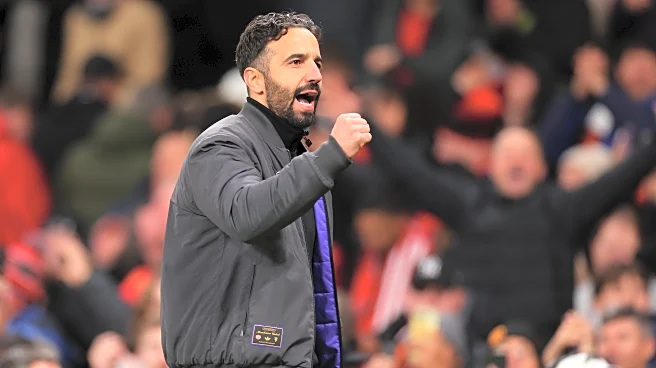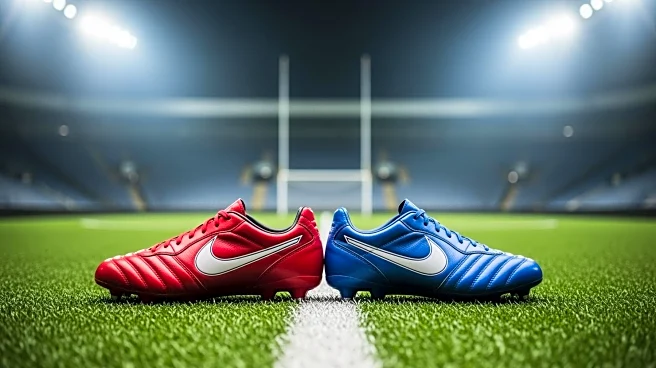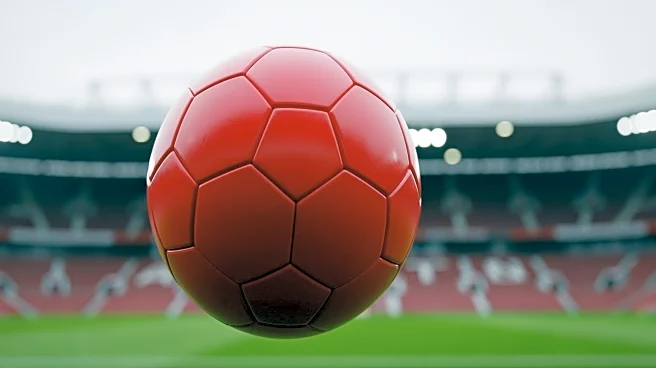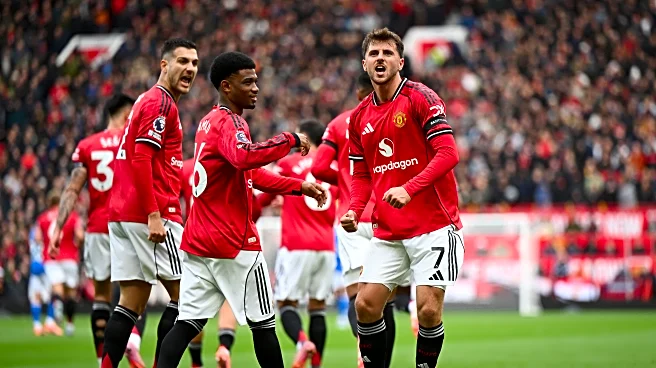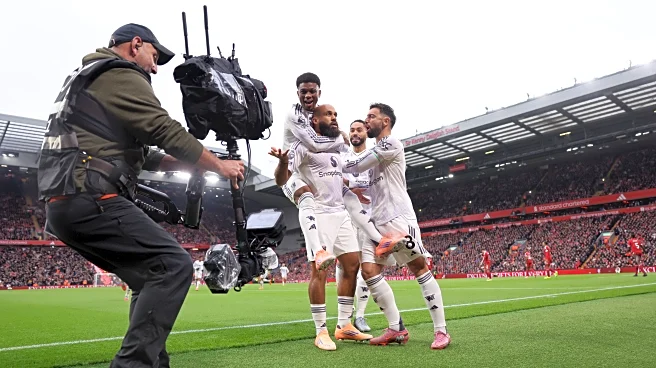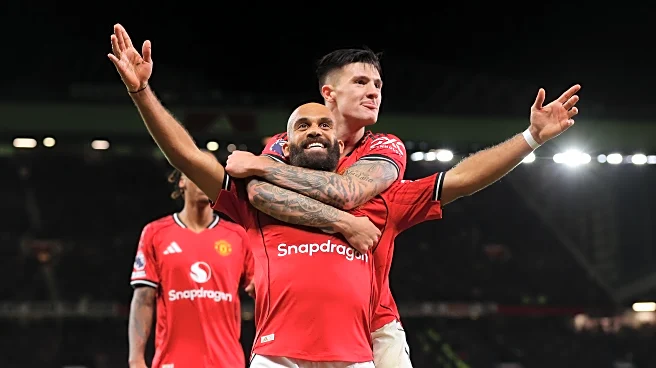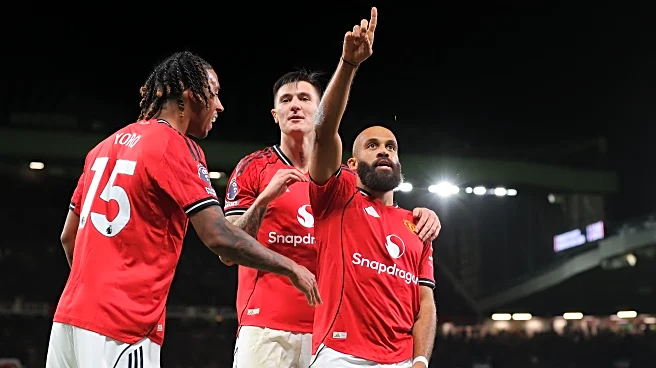There’s an old adage in football that you should never change a winning team. It’s one of those recycled lines that’s been regurgitated over and over for so long it’s become part of the fabric of football punditry but it is in fact very dumb advice. Unless you have by far and away the best players in every game, a manager who follows this advice is almost certainly doomed for failure.
Manchester United have won three Premier League matches in a row, the longest winning streak of the Ruben Amorim era.
They’ve won those games simply because Amorim made changes. He fielded three different teams with three different game plans.
Why would you keep tinkering and changing a winning formula? Simple. Because United were playing against three different teams.
Ruben Amorim raised many eyebrows with his team selection for United’s match at Anfield. Over the last few games, it was starting to look like United were settling into something with new striker Benjamin Sesko. The team was utilizing his aerial ability and playing long direct balls into him. Through nine games, no player has completed more passes to Sesko than the goalkeeper position (23) and in just three games, Senne Lammens has completed as many passes as the next highest player on the list Bruno Fernandes (14). On top of that Sesko himself was starting to get going, scoring goals in consecutive games against Brentford and Sunderland.
But against Liverpool, Sesko was dropped to the bench in favor of Mathues Cunha, who is not a natural striker and who had, not unjustifiably, been dropped for the match against Sunderland. There was a reason for this though, as Amorim outlined after the match.
Sometimes the characteristic of the game changes the way we approach it. Cunha in the middle – if we put Ben (Sesko), it is easier for these kinds of center-backs to control our striker.
Amorim felt if United were just going to try and play direct to Sesko, it would play right into the hands of Virgil van Dijk and Ibrahim Konate. The two wouldn’t be challenged, and the advantage would go to Liverpool.
So United did something different. Cunha lined up as the striker but played as a false-9. He dropped deep into midfield, leaving Van Dijk with the age-old false-9 choice: let Cunha give United a numerical advantage in midfield or follow him. United wanted to entice Van Dijk to step up as much as possible – and then attack the vacated space behind him. If he wasn’t going to follow Cunha, they’d simply launch aerial balls in there to suck him out.
That happened 50 seconds into the match when Harry Maguire – with plenty of time and space to bring the ball down and settle possession – thumped a header right back in the direction of Van Dijk.

United would win the second ball, get it wide, and immediately, Bryan Mbeumo was looking to attack the space behind Van Dijk.

Just like that United were 1-0 up.

Following the goal, United would settle down into their block, but about 25 minutes later, they came back to life and sprang a few attacks. All of them would come from the same pattern – isolate Van Dijk, then look to attack behind him.
This time it comes when United finds Amad in space on the right flank. When Liverpool left back Milos Kerkez steps out on him, Mbeumo makes a run behind him, forcing Van Dijk to follow him.

With Van Dijk out wide, Cunha promptly attacks the space vacated by the Dutchman.

Cunha gets into the space to play a dangerous cross that nearly falls for Mason Mount.

Not 30 seconds later United get a turnover and again are looking to attack the space behind Van Dijk.

Which again almost leads to a chance for Mason Mount.
The way United used their forwards can be seen in where they touched the ball. Cunha was deployed as United’s highest player, yet only 44.7 percent of his touches came in the final third compared to 40.4 percent in the middle third. Mbeumo, who was technically deployed deeper than Cunha, took 59.4 percent of his touches in the final third compared to just 28.1 percent in the middle third.
United had a clear plan for how they were going to attack Liverpool. They wanted to isolate Van Dijk from the rest of his back line and his midfielders, then force him to defend large amounts of space. Mathues Cunha is more suited to seeing out that plan than Benjamin Sesko is. Recent form be damned, Cunha got the call.
A week later United played Brighton and with that came a new game plan tailored to this opponent.
Early on it looked like Brighton were going to try and deploy similar tactics that have tripped United up several times this year. A forward would drop into midfield, forcing one of the wide center backs to follow him. From there, a wider player would attack the space vacated by the outside center back.
Two minutes into the match we see Georginio Rutter push right up onto Luke Shaw.

Rutter then starts dropping deeper into midfield, prompting Shaw to follow him.

As soon as Shaw drops into midfield, right back Mats Wiffer makes a run from deep into the space Shaw vacated. Mathues Cunha doesn’t go with him, leaving Diogo Dalot to cover two men.

Luckily for United, the ball doesn’t get played.

This was a theme throughout the day. Brighton dropped a man into midfield, a center back followed him, another player would make a run, but the ball wouldn’t get played. That the ball wasn’t getting played was thanks to a tweak that United made.
Eight minutes into the game we were able to see exactly what Brighton wanted to do. In this sequence, they manage to drag the central center back – Matthijs de Ligt – all the way up the pitch thanks to Danny Welbeck dropping deep.

Brighton doesn’t just want to hoof hopeful long balls from the back over United’s back line. They want to go up, back, through, and attack the vacated space behind the center back.

United prevented this by increasing the pressure they applied further up the pitch.
We saw it a few minutes earlier when the sequence starts roughly the same way the first one does, with Rutter dropping into midfield and Shaw following.

This time, Casemiro pushes right onto Yasin Ayari, forcing him to give the ball back to his defenders.

With Shaw stepping into midfield again, this time we see two players try and attack the space in behind. Once again Cunha leaves his man, forcing Dalot to commit to the middle of the pitch as Shaw has to chase his man towards’ United’s right-hand side. This leaves a man wide open on the far touchline.

However, as you can see in the image above, United gets touch tight to Brighton’s midfielders, taking away Brighton’s pass to the second level. Thus, the ball in behind doesn’t get played again.

United’s aggressiveness in the middle of the pitch took the pressure off their defenders and stopped putting them in a position that they’ve typically struggled in all season. With United focused on cutting off passes to the midfield, they were able to defend far more aggressively much higher up the pitch.
United relentlessly pressed Brighton from the outset. According to Opta’s data, United entered Saturday’s match pressing 9.5 of their opponents sequences per game and forcing 45 high turnovers (5.63 per game). Against Brighton, they pressed 19 sequences and had 15 high turnovers – nearly three times their per game average. Of those 45 high turnovers prior to the Brighton match, only two had lead to shots all season. Against Brighton they did it three times, including the opening goal.
The numbers don’t even tell the full story here. Bryan Mbeumo’s first goal is not officially considered a high turnover, but it happens because of United’s sweltering press and a nice play by Luke Shaw stepping up to close down a man in midfield and create a turnover.

Similarly, Mbeumo’s second goal is not considered a high turnover, but again comes about from United pressing high in the games dying moments to force a turnover rather than sitting back and letting Brighton carry the ball up the pitch.

Three wins on the bounce is great for United but what’s even better is that they approached each game differently. If we go back to the adage that you shouldn’t mess with a winning team we can quickly see it’s flaws.
A team loses a game so the next game the coach makes changes to the team. He picks a team based on who gives him the best chance to beat whomever his opponent is that week. If you win that game and run the same team back, it’s not guaranteed that those 11 players give you the best chance of winning the next week. Even if they do win the next game, eventually you will end up putting out a team that doesn’t give you the best chance of beating a certain opponent.
It’s a great sign that Amorim has been able to make changes coming off of a win. Being able to do this goes a long way in terms of squad management and building trust within a team.
If a coach only makes changes after a loss or draw, dropping a player can be perceived as blaming a player, fairly or unfairly and create resentment in the squad (especially if someone else doesn’t get dropped). If you establish a pattern of picking players for very specific reasons being dropped no longer feels like a punishment.
Benjamin Sesko is in great form heading into the Liverpool match, but he doesn’t fit the game plan, so he goes to the bench, and is back in the team a week later. It creates a trust within the team that being dropped isn’t necessarily a punishment. As long as the manager maintains a consistent policy on the matter you know you’re going to get right back in the team. Not only that but it’s going to be a situation that is more favorable for you and you’ll be fresher, which increases your chances of being successful.
It’s certainly true the injury to Mason Mount may have made it an easier call to put Sesko back into the team. While I may believe Sesko would have been back in the team anyway, we really don’t know for sure. Nevertheless, injuries happen throughout the year (especially when Mason Mount is involved), if the manager is constantly putting out different lineups based and keeping everyone involved, injuries will be far easier to mitigate as recalled players will be both fresh and have match sharpness.
Winning three games in a row is great. But the way United have beaten three different teams from three different parts of the table is a sign that things might be starting to happen for this team.
